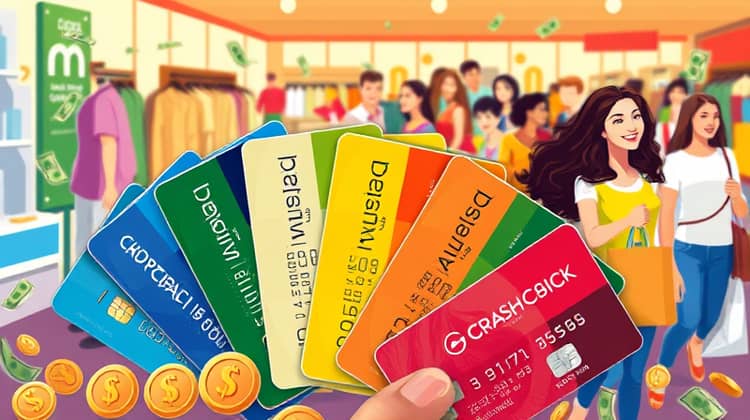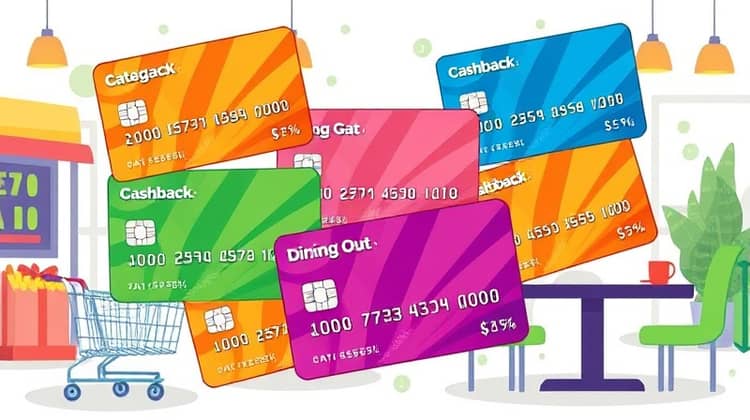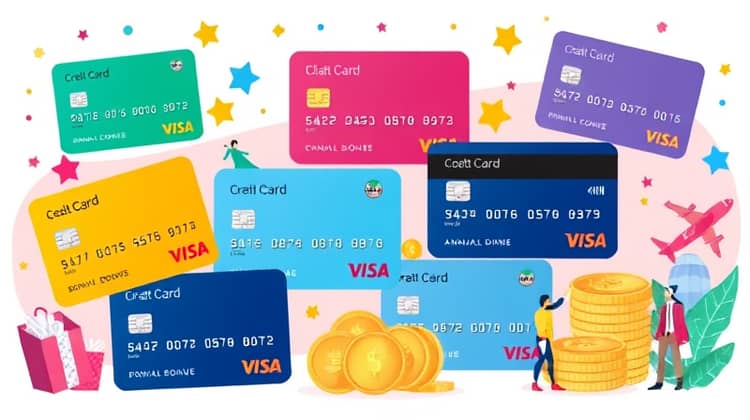Cashback vs. Rewards Credit Cards: Which Offers the Best Perks for You?

When it comes to choosing between cashback and rewards credit cards, consumers are often faced with a dilemma. Both types of cards offer distinct advantages, yet understanding these benefits is crucial for making the best financial decision. This article will delve into the details of each category, exploring the perks, potential drawbacks, and how to maximize their use.
Cashback credit cards provide rewards in the form of cash, which can be redeemed directly for purchases, statement credits, or even deposited into a bank account. On the other hand, rewards credit cards offer points or miles that can typically be redeemed for travel, merchandise, gift cards, or even experiences. Each option caters to different spending habits and personal preferences when it comes to redeeming value.
Ultimately, the right choice will depend on individual lifestyle factors, spending patterns, and goal orientation. By evaluating the various features and ensure they align with personal finances, consumers can make more informed choices. Let's explore the intricacies of cashback and rewards credit cards in greater detail.
Understanding Cashback Credit Cards

Cashback credit cards have gained immense popularity due to their straightforward approach to rewards. Essentially, cardholders earn a percentage of their spending back in cash, making it easy to understand and track earnings. Depending on the card, cashback typically ranges from 1% to 6%, varying by spending category.
Unlike other rewards systems, where points are earned and converted, cashback is directly credited to the cardholder's account, making it an attractive option for those who prefer simplicity over complicated rewards structures. This directness allows consumers to enjoy their rewards without deciphering point values or redemption limits.
Additionally, cashback cards often come with no annual fees, making them financially accessible for a broader audience. This feature attracts those who might be deterred by premium cards with high fees, ensuring they can still benefit from earning rewards on their everyday spending.
- Easy to understand and manage
- Direct cash rewards upon spending
- Often have no annual fees
Cashback credit cards are particularly appealing for individuals who prefer tangible rewards they can easily access and use at their discretion. Whether it’s for daily purchases or occasional splurges, the cash earned can be used in versatile ways that traditional points may not offer.
Furthermore, cashback rewards can motivate consumers to make responsible spending choices, as they reap benefits from their purchases. However, it's important for cardholders to be aware of any stipulations such as spending limits that may affect cashback earnings.
Types of Cashback Credit Cards

There are several types of cashback credit cards designed to address various spending habits and preferences. Understanding these types can help consumers identify which card might be most beneficial for their financial lifestyle. Cards may categorize rewards based on specific sectors, which can enhance the overall cashback return based on where your spending happens most frequently.
Some cashback cards offer a flat rate across all purchases, while others may provide higher percentages in select categories such as groceries, gas, or dining out. This variety allows consumers to choose cards that best align with their everyday spending habits.
- Flat-rate cashback cards: Earn a fixed percentage on all spending regardless of category.
- Tiered cashback cards: Provide different cashback rates based on spending categories, promoting strategic shopping.
- Rotating category cards: Offer increased cashback percentages that change quarterly, requiring consumers to adapt their spending strategies.
Choosing the type of cashback card that suits your spending style greatly impacts the total rewards redeemable over time. For individuals who spend consistently in certain categories, tiered or rotating category cards could yield higher earnings compared to flat-rate cards.
How Cashback is Typically Redeemed

Cashback redemption processes can vary between different credit card issuers. However, commonly, cashback rewards accumulate in your account balance, allowing users to redeem their earnings once a specific threshold is reached or in accordance with their card's terms.
Typically, cashback can be redeemed as a credit toward a statement balance, a deposit to a checking or savings account, or used for gift cards.
- Direct deposit to a bank account
- Credit against outstanding card balance
- Redeeming for gift cards or merchandise
Understanding the redemption process is crucial because it directly impacts how quickly consumers can utilize their rewards. Different cards may offer varying flexibility in cash redemption options, and potential fees for certain methods should also be considered. These nuances often inform how beneficial one cashback card is over another.
Pros and Cons of Cashback Credit Cards

Cashback credit cards present several benefits, particularly their straightforward nature and potential financial advantages. They are highly appealing for frequent shoppers as cash returns can quickly accumulate and be used for practical purposes, such as bills or emergencies. Not to mention, they often have fewer limitations compared to rewards points, making cashback more readily usable.
However, like all financial products, cashback credit cards also come with their drawbacks. High-interest rates can devastate the financial benefits derived from any cashback earned if balances remain unpaid.
- Simplicity of earning and redeeming cash rewards
- Can be value-driven for everyday spending
- Encourages responsible spending habits
In summary, cashback cards provide a solid pathway for individuals seeking immediate, tangible benefits from their spending. Yet, consumers must also be mindful of their spending habits to truly capitalize on the perks these cards offer.
Rewards Credit Cards Explained

Rewards credit cards are structured to offer points or miles based on spending, which can be redeemed for various perks such as travel, experiences, or gift items. This makes them a highly versatile option for those who enjoy maximizing their spending through targeted rewards that can often yield more value than cash back.
The rewarding experience can be compelling, encouraging consumers to engage in loyalty programs and accumulate points over time, fostering a travel lifestyle or facilitating purchases they might not have otherwise made.
- Earn points for every dollar spent
- Points can be redeemed for flights, hotel stays, and car rentals
- Many offer exclusive perks such as travel insurance and purchase protection
However, the complexity of points systems can be overwhelming. It’s imperative for cardholders to understand how to leverage their points effectively to ensure they receive maximum value from their rewards.
Common Rewards Structures

Rewards credit cards often use various structures to attract and retain customers. By understanding how rewards points are typically accrued, cardholders can better strategize their spending to optimize their points potential.
Some common structures include:
- Flat points per dollar spent on all purchases
- Bonus points for specific spending categories
- Annual bonuses for consistent spenders
Knowing these structures is crucial as they dictate how consumers earn and redeem points. Cardholders should evaluate these structures against their spending habits to determine potential savings or travel opportunities.
Ways to Redeem Points/Miles

There are several appealing ways to redeem points and miles accrued through rewards credit cards, providing consumers with diverse options tailored to their preferences.
Some popular methods include:
- Booking travel directly through airlines or travel portals
- Exchanging points for gift cards
- Using points to shop through specific retailers
Each redemption method offers different value propositions and potential bonuses, so users should carefully assess the best ways to maximize their earned points. By doing so, they enhance their potential returns, making the most out of their spending.
Pros and Cons of Rewards Credit Cards

Rewards credit cards can present wonderful opportunities for those savvy enough to utilize them properly. The primary advantage lies in their capability to create value beyond just spending money, appealing strongly to those who enjoy travel or exclusive offers.
Nevertheless, rewards cards may also lead consumers into a cycle of overspending to maximize points, often resulting in higher overall credit balances and interest payments that negate the benefits earned.
- Potential for high rewards on targeted spending
- Opportunities for exclusive experiences and offers
- May offer benefits like travel protections
Consumers should strike a balance when using rewards credit cards to avoid common pitfalls. By understanding their spending behaviors and rewards structures, they can reap the rewards without excessive financial strain.
Factors to Consider When Choosing Between Cashback and Rewards

When deciding between cashback and rewards credit cards, several key factors should be considered. This includes evaluating personal spending patterns, desired rewards types, and whether full benefits can be realized without accumulating debt. Understanding these aspects allows consumers to better situate themselves for financial success.
Additionally, evaluating each card's terms and conditions, such as annual fees, interest rates, and redemption options, is crucial to selecting a card that complements personal finances.
- Analyze your spending behavior and identify key categories where you spend the most.
- Compare cashback rates and rewards points structures from various credit cards.
- Evaluate whether you prioritize immediate cash benefits over long-term reward potentials.
Ultimately, this decision hinges substantially on personal lifestyles and spending habits. Each card type offers unique advantages, so thorough research is essential for maximizing rewards and minimizing financial risk.
Conclusion

In conclusion, both cashback and rewards credit cards offer customers distinct advantages tailored to different spending behaviors. While cashback cards are ideal for consumers seeking straightforward cash returns, rewards cards present opportunities for more significant value through points and miles redemption. Choosing the right card hinges on individual goals and spending habits.
Ultimately, the best card enhances one's financial situation and aligns with personal preferences. By weighing the pros and cons of each option and understanding personal spending patterns, consumers stand to benefit significantly from whichever card they choose.






